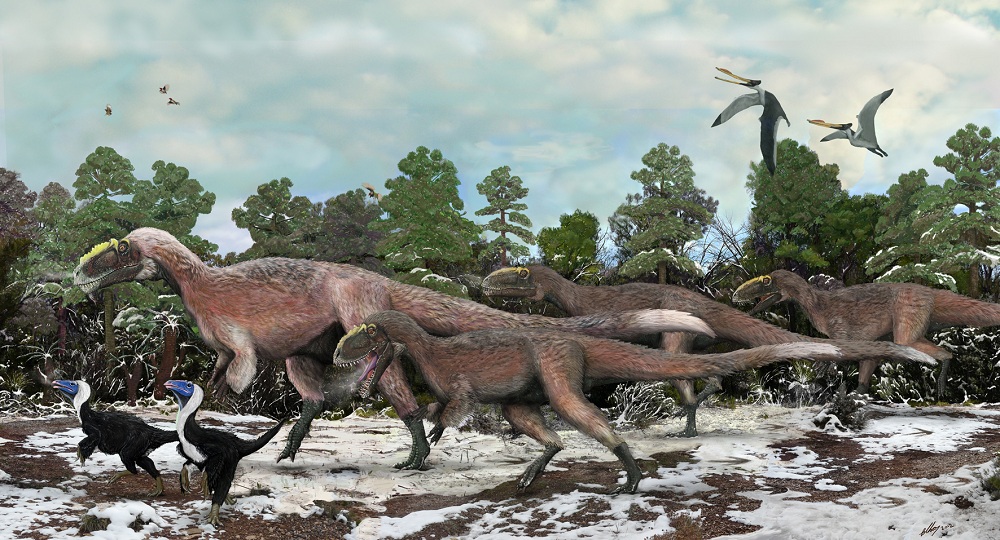'Fuzzy' Dinosaur Discovery Provokes Frustration

Enormous, predatory, and a cousin to the iconic T. rex — the discovery of the 30-foot (9.1-meter) Yutyrannus huali was the sort that should have elated dinosaur lovers.
But news that the beast sported "fuzzy" feathers sparked outcry from traditionalists, notes the Smithsonian Magazine's blog Dinosaur Tracking.
Until this discovery was announced in early April, feathers were generally associated with smaller and more birdlike dinosaurs, according to the post. But the paleontologists who analyzed fossil remains of the newly discovered dinosaur, whose name means "beautiful feathered tyrant," found evidence of fuzz.
"The feathers of Yutyrannus were simple filaments," said study researcher Xing Xu of the Chinese Academy of Sciences in Beijing. "They were more like the fuzzy down of a modern baby chick than the stiff plumes of an adult bird."
Some who follow such discoveries were not pleased, with online commentors bemoaning the threat to the image of the scaly dinosaurs, referring to the discovery of the impressive, yet downy, Yutyrannus, as among other things a "chicken from hell."
Readers of LiveScience's story described the Yutyrannus as "cuddly" and "a fabulous fuzzy tyrannosaur," but without the alarm that appeared elsewhere on the Web. [Album: The World's Biggest Beasts]
Let us know what you think about this new fuzzy and oh-so-adorable picture of some of the beasts of the paleo world.
Get the world’s most fascinating discoveries delivered straight to your inbox.
You can follow LiveScience senior writer Wynne Parry on Twitter @Wynne_Parry. Follow LiveScience for the latest in science news and discoveries on Twitter @livescience and on Facebook.



